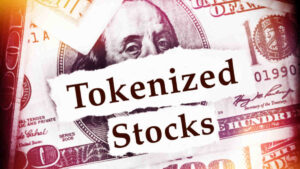Crypto 2022: Fred Schebesta, Visa, Piper Alderman and AusMerchant offer predictions

Getty Images
It’s been a huge year for crypto, in ways few could have ever expected. Who predicted El Salvador adopting Bitcoin as legal tender and mining it with volcano energy?
Or NFTs becoming a huge cultural phenomenon? This time last year, CryptoPunks were selling for around five Ether, or US$3,000 – these days, the floor price is 55 Eth, or $223,000.
The rise of dog coins like Dogecoin and Shiba Inu also caught most of us off guard.
All this is a long way of saying that if there’s one thing we know about crypto, it’s to expect the unexpected.
But in the hopes of gaining some insight, as part of a weeklong series we’ve asked a number of figures in the crypto industry to gaze into their crystal ball and offer some predictions for the coming year.
A blow-off top for Bitcoin
Fred Schebesta, the founder of global fintech Finder and co-founder and advisor of NFT gaming platform Balthazar, isn’t afraid to offer a price prediction for the volatile asset.
“I forecast Bitcoin will crack the US$100,000 mark by February 2022, and hit up to US$105,000, then it will re-correct down to as low as US$12,000 as people rush to sell in the peak,” he says.
“This is a common pattern we have seen almost every year. But I think it will settle at around US$24,000 by the end of 2022.
“Bitcoin is the strongest cryptocurrency and the market tends to follow Bitcoin’s movements. So I’m expecting the market to follow this pattern, but many coins will hurt even more than Bitcoin.”
Finder has been getting into the crypto space, offering a stablecoin deposit account and an easy way to purchase Bitcoin for crypto novices.
View this post on Instagram
A focus on DeFi yield, while meme coins to wither
“2022 is likely to be a very innovative year for the digital asset space, specifically within the realm of market-neutral DeFi protocols,” says Sean Tolkin, the chief executive and founder of AusMerchant, a Sydney-based startup offering crypto payment solutions to luxury businesses.
“With [interest] rate hikes imminent, it would be logical for some of the heat within this market to subside, which will likely increase the use of market-neutral yield generating protocols,” Tolkin says.
He points to how Anchor Protocol offers a 19.4 per cent yield for on all deposits of Terra USD (UST), a stablecoin pegged to the US dollar.
“While this is very far from the returns generated during the height of the market, it’s a very enticing proposition for investors. I foresee continued development and utilisation of these DeFi primitives in the year ahead.
“Furthermore, I see continued progress and investor attention in the play-to-earn blockchain gaming space.
“Meme coins, which epitomise the froth in the market, are likely to be hardest hit.”
Crypto is the way of the future. It’s inevitable.
Major players like CommBank and
Afterpay have revealed it’s part of their future plans.Aus Merchant’s Mitchell Travers predicts which sectors will be next.https://t.co/XzJkRDSdNs
— Aus Merchant (@AusMerchant) November 11, 2021
More banks to offer crypto
Speaking of CryptoPunks and the unexpected — payments giant Visa buying a ‘Punk for US$150,000 may not have been the most surprising crypto thing to happen all year, but it’s certainly on the list.
Over the last 60 years, Visa has built a collection of historic commerce artifacts – from early paper credit cards to the zip-zap machine. Today, as we enter a new era of NFT-commerce, Visa welcomes CryptoPunk #7610 to our collection. https://t.co/XoPFfwxUiu
— VisaNews (@VisaNews) August 23, 2021
Visa also launched a new crypto advisory service in December for banks looking to attract customers with a crypto offering.
“We are seeing a notable shift in the mindset of financial institutions, from a desire to explore and experiment with crypto, to actually building a strategy and product roadmap,” Anthony Jones, Visa’s head of innovation and partnerships for Australia, New Zealand and South Pacific, told Stockhead.
“New research shows that 1 in 3 Australian crypto owners surveyed would consider switching banks to one that offers crypto products in the next 12 months and 82% of crypto owners surveyed would be interested in purchasing crypto from their bank.
“So the case for crypto is getting stronger for financial institutions. It will become increasingly important for them to think beyond their own ecosystem and how they can add value, or help their customers better navigate the world of crypto.
“As a network, our role isn’t to pick winners and losers. Our job is to lean into all things that could affect payments and money movement and explore their impact to clients and consumers.
“Ultimately, we believe that the technologies and platforms that provide the best and most meaningful value for consumers will win. If consumers find it useful and relevant to pay with stablecoins or crypto, that will be a determinant of success. And we’re going to be there to support it.”
And NFTs could be even bigger:
“We think NFTs — non-fungible tokens — have huge potential to play an important role in the future of retail, social media, entertainment, and commerce,” Jones adds.
“Financial institutions will benefit by understanding this space, from how NFTs are stored to what the commercial terms are around buying, selling and returning.”
More brands embracing crypto
A few brands have jumped on the NFT bandwagon, such as footwear companies Adidas and Nike, a trend Sydney blockchain lawyer Michael Bacina sees as accelerating next year.
“2022 will see the arrival of major brands and global artists to the NFT and metaverse space”, says Bacina, a partner at Piper Alderman.
“We will see famous faces on digital products. 2021 was only the start.”
Miramax sues Tarantino over plan to issue ‘Pulp Fiction NFTs’
The path of the righteous man is beset on all sides by the inequities of the selfish and the tyranny of lawsuits. Production company…https://t.co/KEoxdTlijC#NFT #Litigation #Articles pic.twitter.com/Im6hPO1PS8
— Michael Bacina | | Blockchain | Law | (@MikeBacina) November 18, 2021
“Regulatory certainty around many digital assets in 2022 will see even greater movements towards the use of blockchain and decentralised systems in businesses”, Bacina added.
“Hyper-automation of processes and self-executing operations between parties in contractual relationships is only just beginning.”
Related Topics
UNLOCK INSIGHTS
Discover the untold stories of emerging ASX stocks.
Daily news and expert analysis, it's free to subscribe.
By proceeding, you confirm you understand that we handle personal information in accordance with our Privacy Policy.








